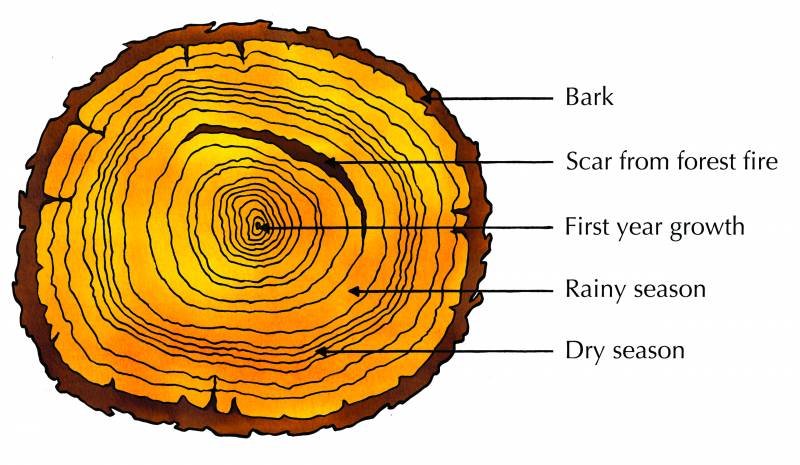Secondary growth
This is brought about by the activities of the lateral meristems thus the vascular cambium (fascicular cambium ) and the cork cambium (phellogen) . It results in increase in girth of the stem and the root of woody perennials (trees and shrubs) .During secondary growth,the cells of the vascular cambium divide radialy to form a complete cambium ring. The cells of the cambium ring then divide tangentially to produce secondary xylem on the inside and secondary phloem on the outside. The cells of the cambium ring in between the adjacent vascular bundles produce secondary parenchyma making up the medullary rays and thus increasing the girth of the stem. As secondary growth occurs, additional medullary rays are formed with the secondary xylem and secondary phloem. These allow horizontal transport of water and solute I side the thicken stem . Much more secondary xylem is produced than secondary xylem, resulting in the phloem and the xylem ring being pushed outward. The secondary xylem makes up the wood. Just beneath the epidermis cells, is a layer of cells in the cortex which form the cork cambium. The cork cambium divides tangentially to form the secondary vortex ( pheloderm) towards the inside and the cork cels (phellem) towards the outside . The walls of the cork cells become impregnated with a fatty substance called suberin which makes the cells impermeable to water and respiratory gases. Some of the cork cells become loosely packed especially where the epidermis split to form the lenticels. There are two forms of wood thus the heart wood ( inner wood) and sap wood ( outer wood). Heartwood is the inner older part. It looks darker and denser than the sapwood because it is infiltrated with gums and resins . ( Cell inclusion) .
Secondary growth occurs rapidly during the rainy season producing a large band of xylem vessels than in the dry season.
This seasonal growth results in the formation of rings which can be seen in cross-sections through the stem . This number of rings provide an accurate way of determining the age of a tree. Note the secondary growth in the root to that in the stem.
In summary, secondary growth takes place in woody perennials such as trees. The cambium cells between the xylem and the phloem in the vascular bundles of the stems divide to form a ring of cambium. (Vascular). The inner cells from the cambium differentiate into secondary xylem and the outer becomes secondary phloem. Some of the cambium cells become medullary rays. These connect the cortex with the outer layer. Ray cells are similar to parenchyma cells. The secondary xylem develops thick lignified woody walls and each year , a new layer is formed. Cork cambium replaces the epidermis of the stem forming a protective nark. The bark contains lenticels through which gases can diffuse into and out of the stem. Secondary growth results in an increase in girth. There are primary and secondary growth. Primary growth results in an increase in length of the plant. A type of growth called apical growth. Secondary growth results in an increase in the girth of the woody perennials thus the lateral growth.


